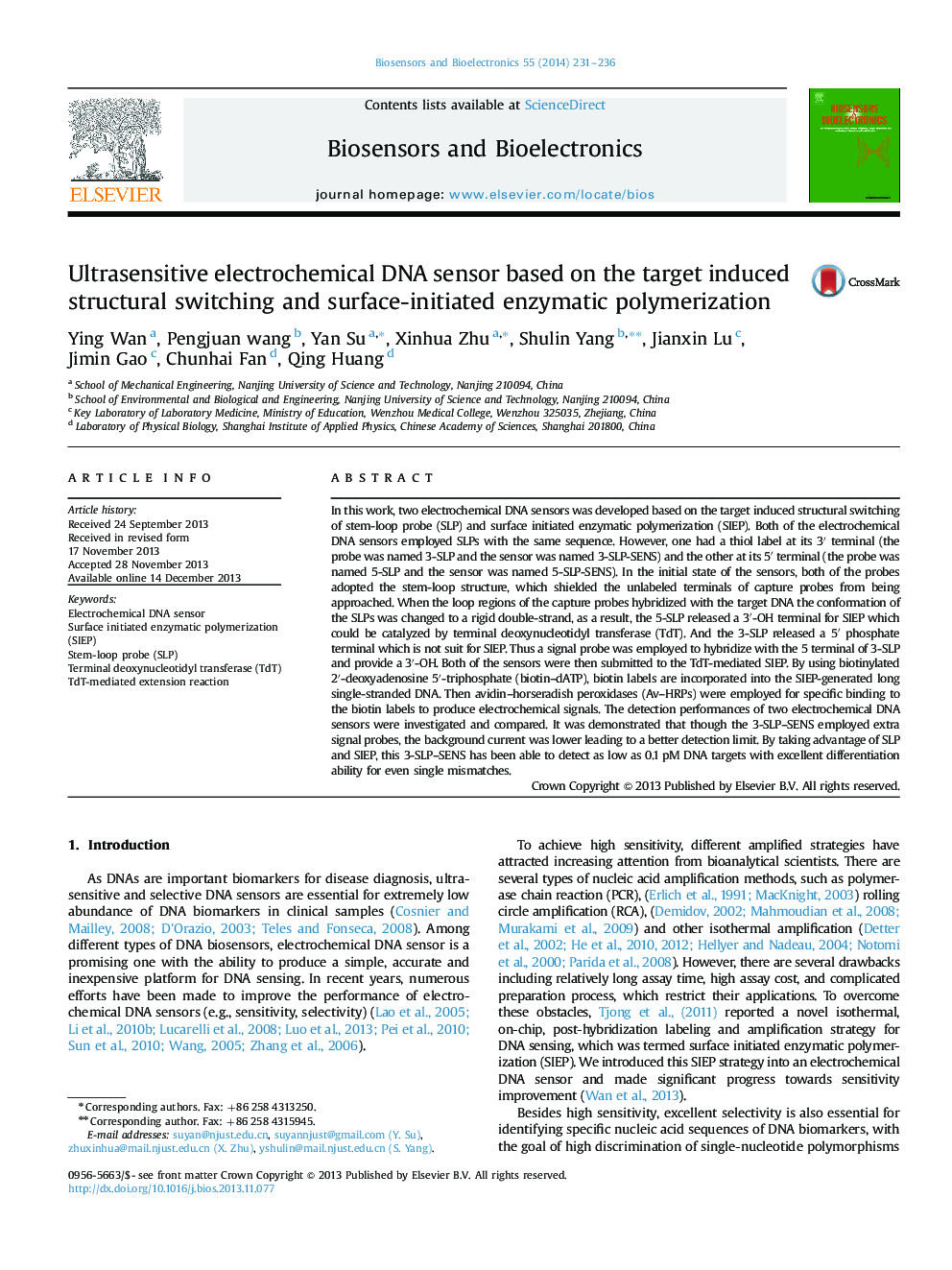| Article ID | Journal | Published Year | Pages | File Type |
|---|---|---|---|---|
| 866494 | Biosensors and Bioelectronics | 2014 | 6 Pages |
•Novel electrochemical DNA sensors were developed with high sensitivity and selectivity.•Sequence specific DNA detection was realized based on target induced structural switching.•Excellent differentiation ability for even single mismatches was achieved.•Surface initiated enzymatic polymerization was employed for signal amplification.•A detection limit of 0.1 pM was achieved.
In this work, two electrochemical DNA sensors was developed based on the target induced structural switching of stem-loop probe (SLP) and surface initiated enzymatic polymerization (SIEP). Both of the electrochemical DNA sensors employed SLPs with the same sequence. However, one had a thiol label at its 3' terminal (the probe was named 3-SLP and the sensor was named 3-SLP-SENS) and the other at its 5' terminal (the probe was named 5-SLP and the sensor was named 5-SLP-SENS). In the initial state of the sensors, both of the probes adopted the stem-loop structure, which shielded the unlabeled terminals of capture probes from being approached. When the loop regions of the capture probes hybridized with the target DNA the conformation of the SLPs was changed to a rigid double-strand, as a result, the 5-SLP released a 3'-OH terminal for SIEP which could be catalyzed by terminal deoxynucleotidyl transferase (TdT). And the 3-SLP released a 5' phosphate terminal which is not suit for SIEP. Thus a signal probe was employed to hybridize with the 5 terminal of 3-SLP and provide a 3'-OH. Both of the sensors were then submitted to the TdT-mediated SIEP. By using biotinylated 2'-deoxyadenosine 5'-triphosphate (biotin–dATP), biotin labels are incorporated into the SIEP-generated long single-stranded DNA. Then avidin–horseradish peroxidases (Av–HRPs) were employed for specific binding to the biotin labels to produce electrochemical signals. The detection performances of two electrochemical DNA sensors were investigated and compared. It was demonstrated that though the 3-SLP–SENS employed extra signal probes, the background current was lower leading to a better detection limit. By taking advantage of SLP and SIEP, this 3-SLP–SENS has been able to detect as low as 0.1 pM DNA targets with excellent differentiation ability for even single mismatches.
